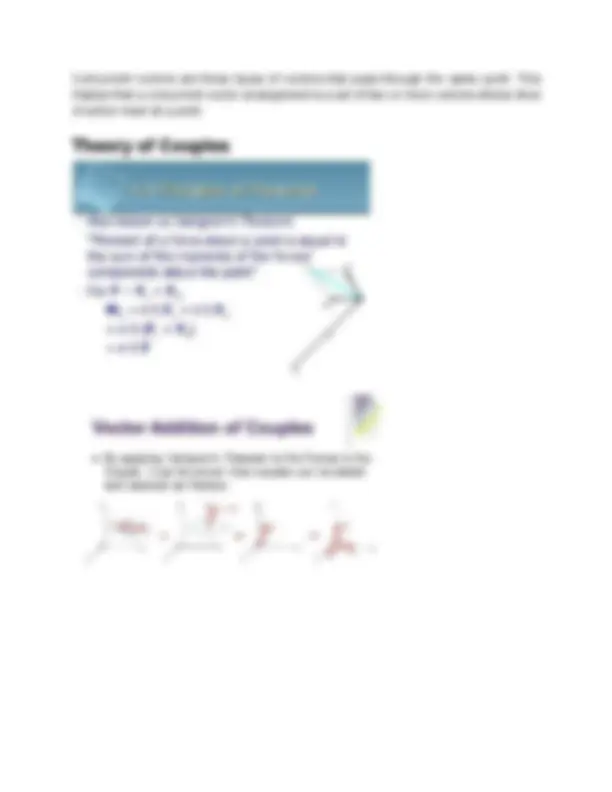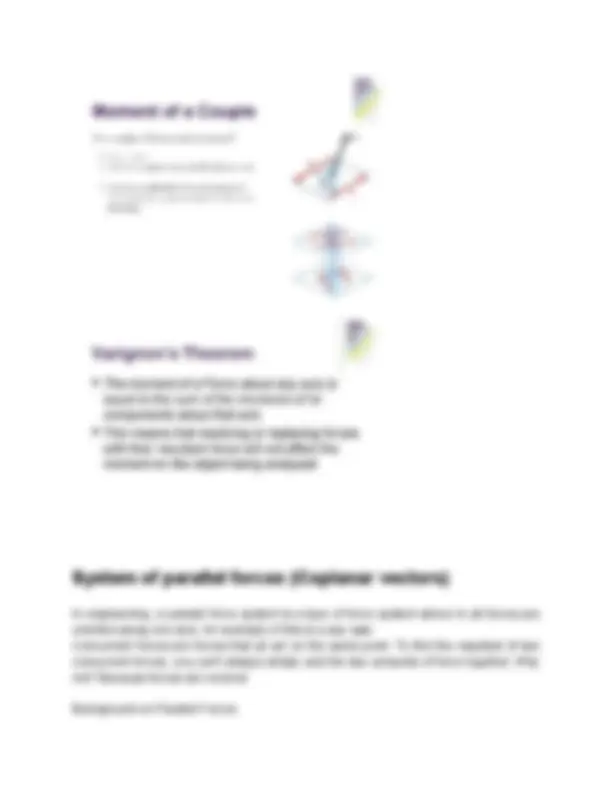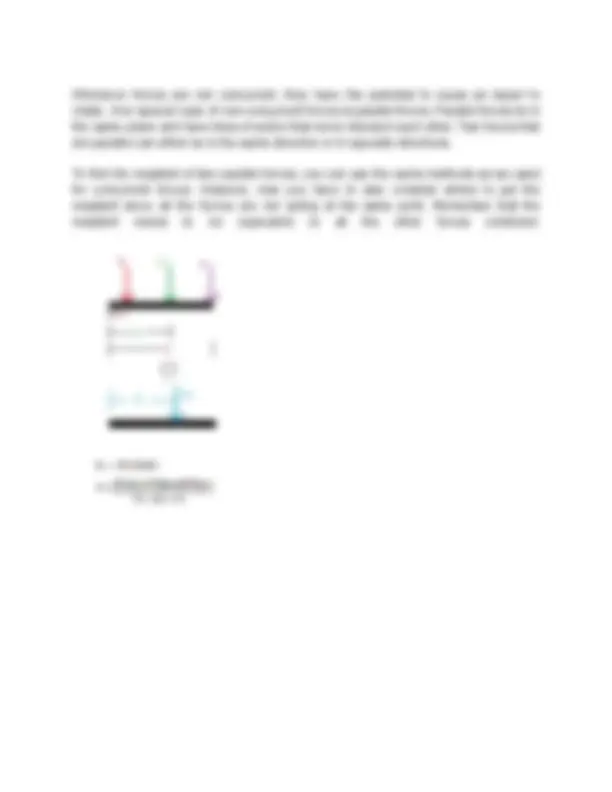





Study with the several resources on Docsity

Earn points by helping other students or get them with a premium plan


Prepare for your exams
Study with the several resources on Docsity

Earn points to download
Earn points by helping other students or get them with a premium plan
Community
Ask the community for help and clear up your study doubts
Discover the best universities in your country according to Docsity users
Free resources
Download our free guides on studying techniques, anxiety management strategies, and thesis advice from Docsity tutors
Vector calculus or vector analysis is a branch of mathematics concerned with the differentiation and integration of vector fields
Typology: Cheat Sheet
1 / 7

This page cannot be seen from the preview
Don't miss anything!




A set of point forces is considered concurrent if all the lines of action of those forces all come together at a single point. Because the forces all act through a single point, there are no moments about this point. Because no moments exist, we can treat this body as a particle. In fact, because real particles only exist in theory, most particle analysis is actually applied to extended bodies with concurrent forces acting on them.
The basic knowledge of various kinds of forces and motion is highly desirable for engineering and practical applications. The Newton’s laws of motion defines and gives the expression for the force. Force is a vector quantity and can be combined according to the rules of vector algebra. A force can be graphically represented by a straight line with an arrow, in which the length of the line is proportional to the magnitude of the force and the arrowhead indicates its direction. A force system is said to be concurrent, if the lines of all forces intersect at a common point. A force system is said to be coplanar, if the lines of the action of all forces lie in one plane .
In engineering, a parallel force system is a type of force system where in all forces are oriented along one axis. An example of this is a see saw. Concurrent forces are forces that all act on the same point. To find the resultant of two concurrent forces, you can't always simply add the two amounts of force together. Why not? Because forces are vectors! Background on Parallel Forces
Whenever forces are not concurrent, they have the potential to cause an object to rotate. One special case of non-concurrent forces is parallel forces. Parallel forces lie in the same plane and have lines of action that never intersect each other. Two forces that are parallel can either be in the same direction or in opposite directions. To find the resultant of two parallel forces, you can use the same methods as we used for concurrent forces. However, now you have to also consider where to put the resultant since all the forces are not acting at the same point. Remember that the resultant needs to be equivalent to all the other forces combined.